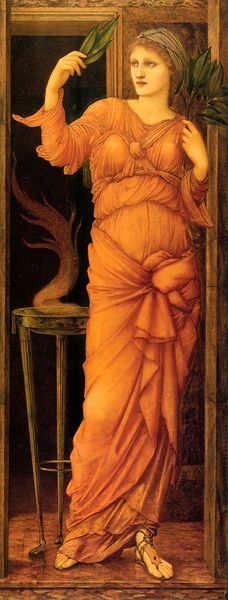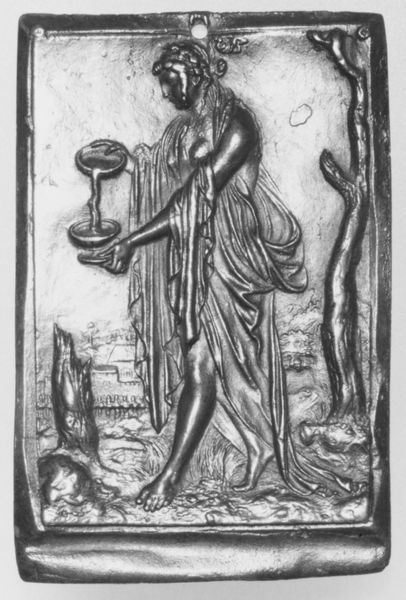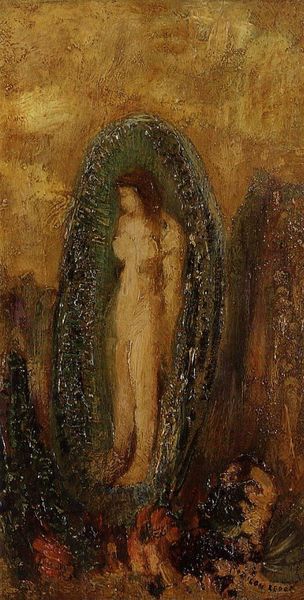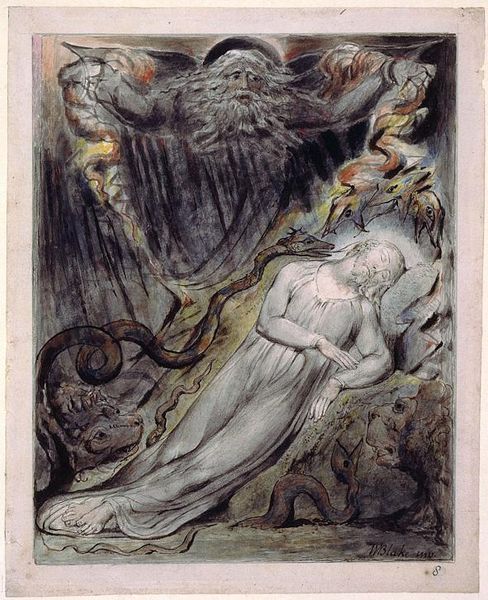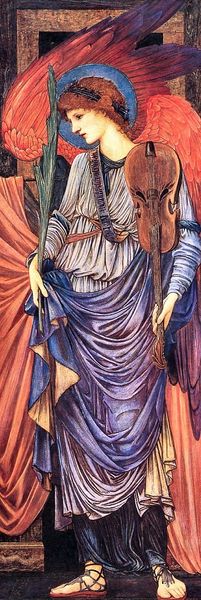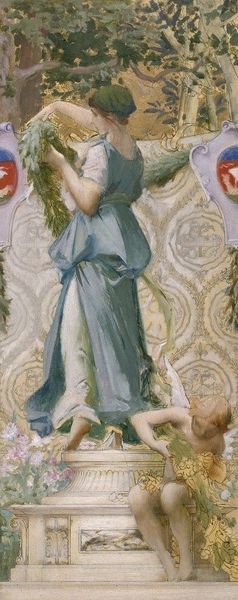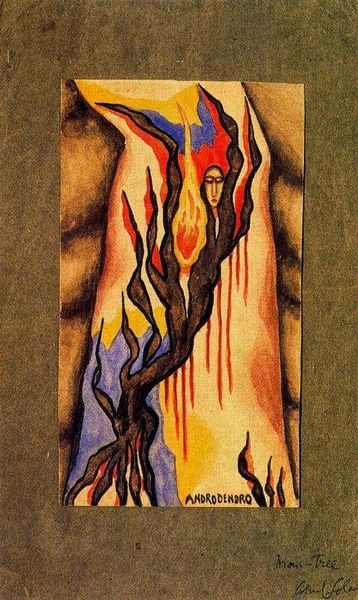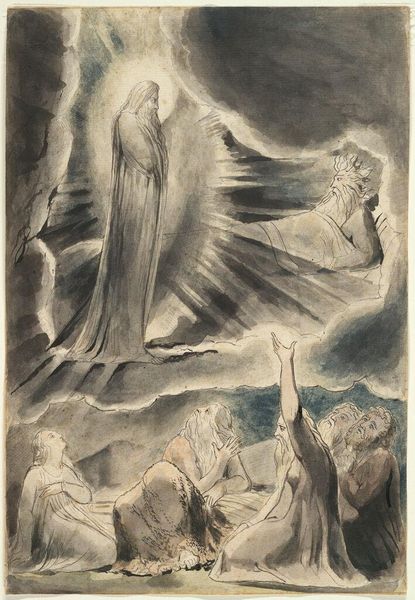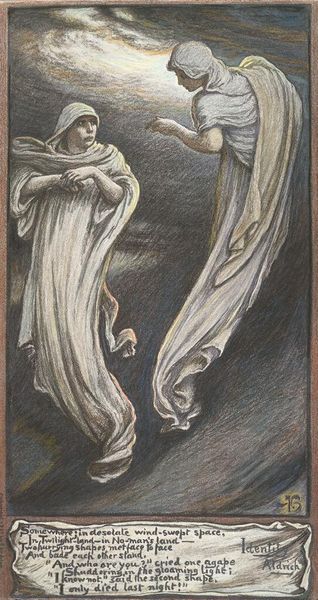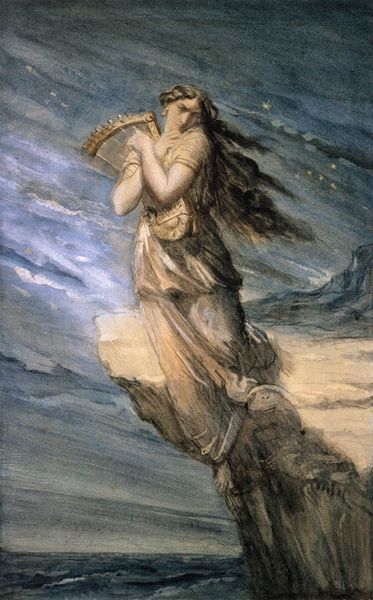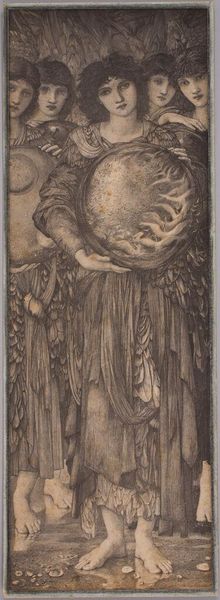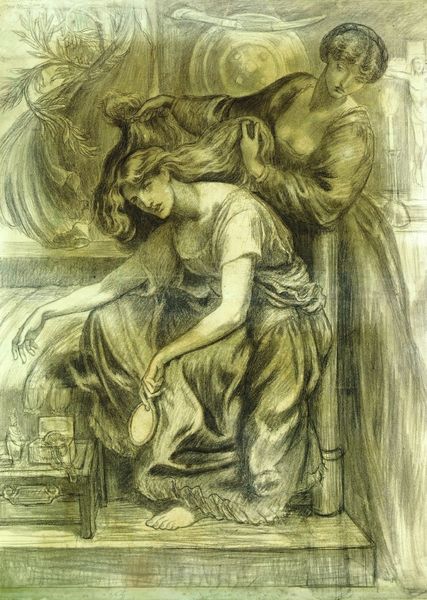
Copyright: Public domain
Editor: Here we have John Duncan’s “Semele,” created in 1921 using watercolors. It's quite striking – almost ethereal. The flames surrounding her give a sense of dynamism. What do you see in this piece? Curator: I see a fascinating exploration of form and color. Consider how Duncan utilizes the verticality of the composition. The upward thrust of the flames draws the eye along Semele’s figure, encased as she is by curvilinear flames. Note the restrained palette, almost monochromatic. The subdued blues and browns behind Semele allow the fire and the woman to become more legible as forms. It also brings to mind the symbolism of transformation and destruction present within that myth. Editor: So, the formal aspects enhance the story? Curator: Precisely. How do line and color affect our reading? Consider how the sharp, flickering lines create a sense of instability. Are those colors symbolic, do you think? Are the forms meant to depict something outside of pure shape and color? Editor: Maybe the subdued tones hint at the tragic consequences? Or how fire itself is a transforming presence in the painting's story, the woman in fire is the medium and the subject? Curator: Yes, and this reinforces the symbolic interpretation. Ultimately, “Semele” shows Duncan's ability to merge narrative with a potent formal language, using shape, colour and light, but with subtle precision to guide our eye and provoke feeling. What is your understanding now that we have had this exchange? Editor: I see it all more now—the fire as a formal and narrative element in the myth, it gives me insight on how both the medium, in this case watercolor, and also the themes within, inform the artist and how the themes enhance the use of a medium to build a unique reading experience of an artwork. Thank you.
Comments
No comments
Be the first to comment and join the conversation on the ultimate creative platform.
